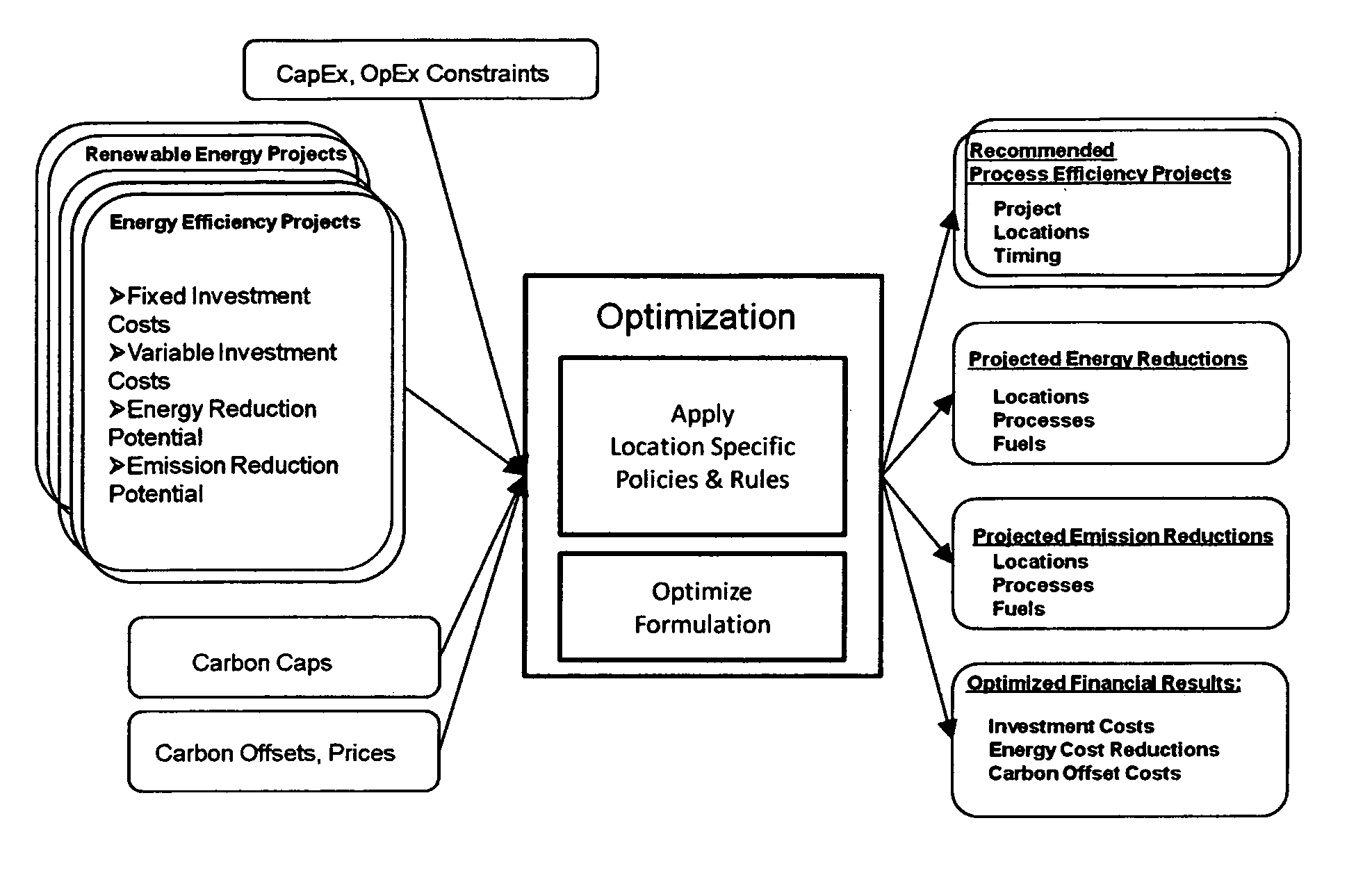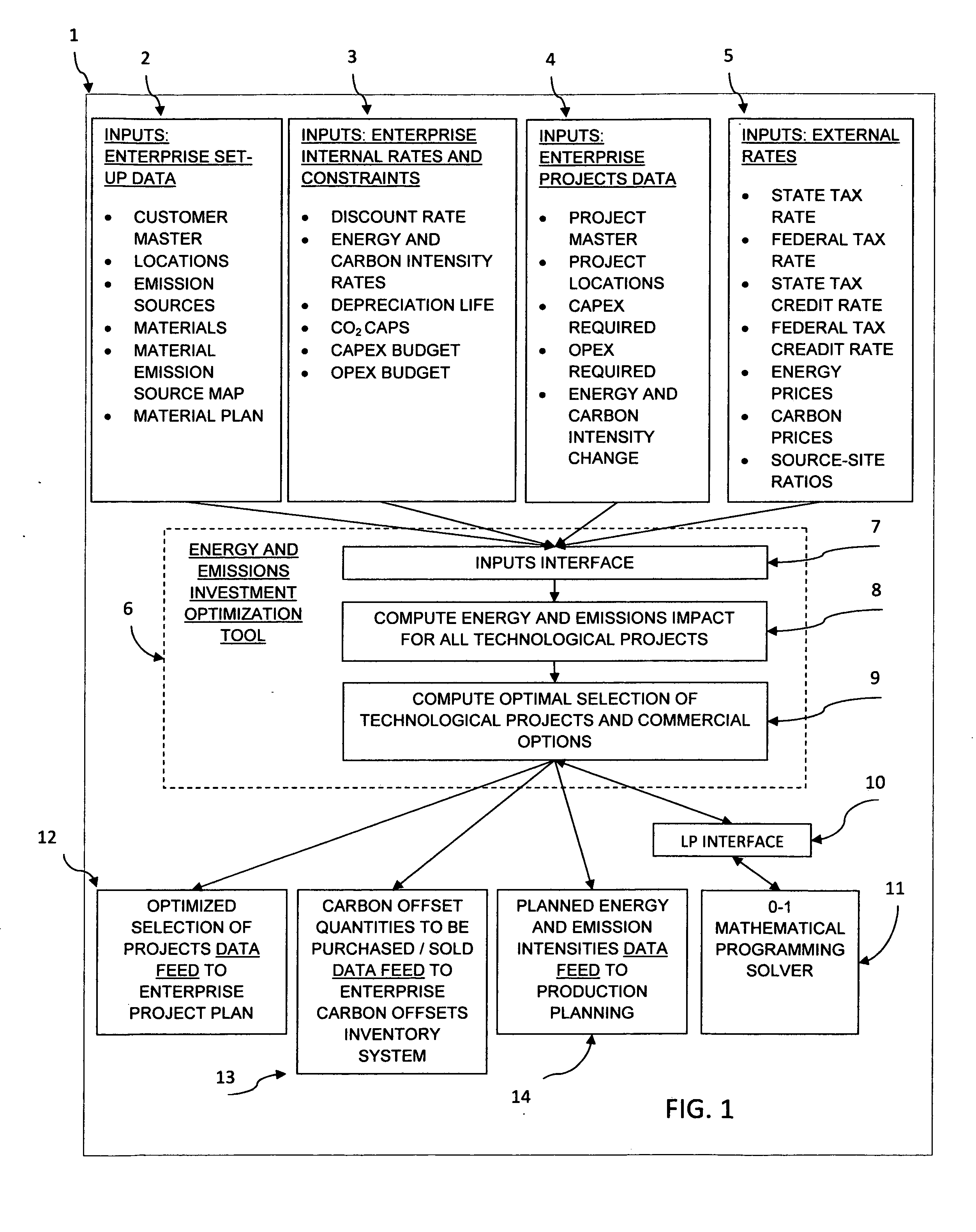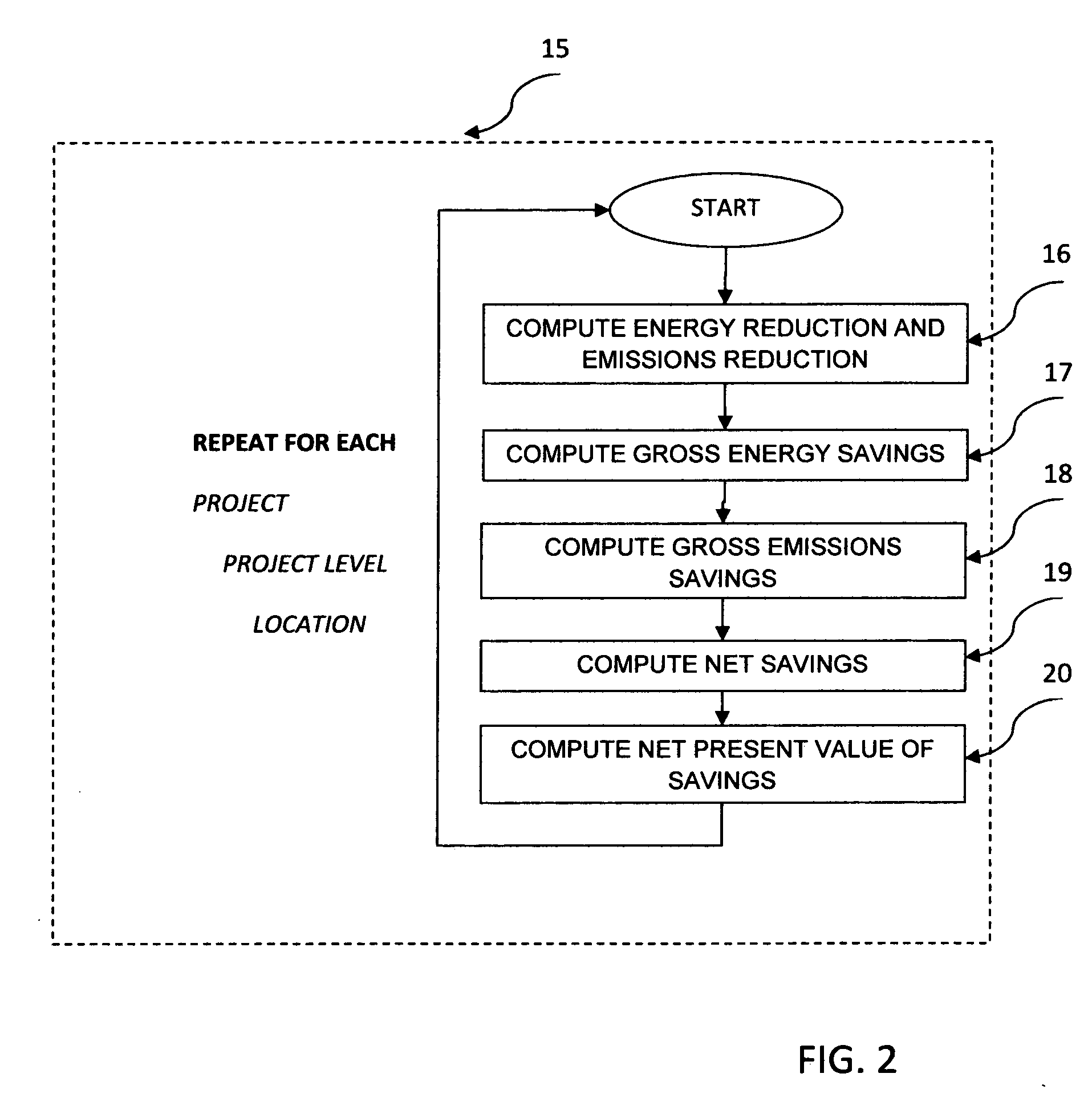Method for industrial energy and emissions investment optimization
a technology for energy and emissions, applied in the field of industrial energy and emissions investment optimization, can solve the problems of unresolved energy cost optimization and ghg emission compliance costs across multiple projects and locations, and the energy cost is expected to continue to increase in the future, so as to achieve the effect of maximizing the total net present value of savings
- Summary
- Abstract
- Description
- Claims
- Application Information
AI Technical Summary
Benefits of technology
Problems solved by technology
Method used
Image
Examples
Embodiment Construction
[0024]The invention is the method (box 6) of selecting an optimal mix of energy efficiency and emission abatement projects, which is comprised of two major stages: I. computing the impact of each energy efficiency and emission abatement project; II. selecting an optimal mix of projects that considers business objectives and business factors and satisfy business constraints. Referring to FIG. 1, boxes 2-5 represent the inputs to this method, which are communicated to the method through inputs interface (box 7). The two stages in the method are represented by boxes 8 and 9 respectively. Box 10 represents a standard interface to a commercial solver; box 11 represents a commercial mathematical program solver; box 12 represents an enterprise storage for storing Energy and Emissions Project Plans; box 13 represents an enterprise storage for Carbon Offsets Inventory. Before continuing, the following are terminology definitions which will be sued herein.
TERMINOLOGY
Inputs: Enterprise Set-up ...
PUM
 Login to View More
Login to View More Abstract
Description
Claims
Application Information
 Login to View More
Login to View More - R&D
- Intellectual Property
- Life Sciences
- Materials
- Tech Scout
- Unparalleled Data Quality
- Higher Quality Content
- 60% Fewer Hallucinations
Browse by: Latest US Patents, China's latest patents, Technical Efficacy Thesaurus, Application Domain, Technology Topic, Popular Technical Reports.
© 2025 PatSnap. All rights reserved.Legal|Privacy policy|Modern Slavery Act Transparency Statement|Sitemap|About US| Contact US: help@patsnap.com



